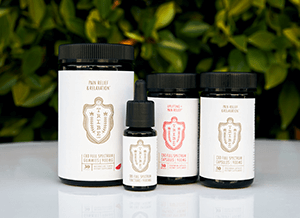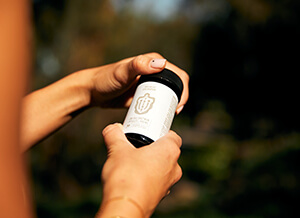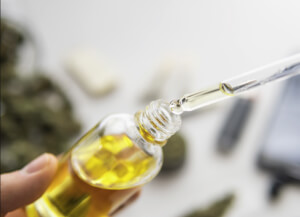According to recent statistics, virtually every American should add more greens to their diet. The CDC now claims only about 10 percent of Americans eat the recommended amount of veggies each day. If you’re not eating greens like spinach and kale, you’re missing out on countless beneficial nutrients, including chlorophyll!
While chlorophyll has a bad reputation with some CBD users, it has so many positives to offer customers. In fact, chlorophyll is one of the major reasons Tribe produces full-spectrum CBD oil. Although chlorophyll gives hemp its “grassy” taste, it has many impressive properties you’ll want to take advantage of.
Why Would Someone Want To Eat Chlorophyll?
Even if you don’t remember everything from botany 101, you probably remember that chlorophyll plays a primary role in photosynthesis. However, this compound isn’t solely responsible for a green plant’s health. Many scientific investigations suggest chlorophyll may have a beneficial effect on the human body.
Researchers now believe chlorophyll has potent antioxidant properties. In fact, a few studies suggest chlorophyll could prevent free radical damage to our DNA. A study published on WebMD found that people who took a synthetic version of chlorophyll every day for a few months had a 55 percent reduction in DNA damage.
Some researchers even believe chlorophyll may have potent anti-cancer properties. While it’s still difficult to say how chlorophyll affects the development of tumors, scientists are hopeful this compound has a positive impact on overall health & wellbeing.
Since CBD is also considered an antioxidant, chlorophyll may enhance a hemp extract’s effects. Indeed, many cannabis researchers now support the “entourage effect” theory. Under this theory, cannabinoids like CBD work better when paired with other natural hemp compounds. So, while CBD may work in isolation, “entourage effect” supporters claim it will have a more significant impact with additional terpenes, cannabinoids, and chlorophyll.
Does Every CBD Oil Have Chlorophyll?
Even though chlorophyll is naturally present in hemp plants, it may not appear in your CBD oil. Some manufacturers siphon off chlorophyll to make their CBD extracts taste better. As mentioned above, chlorophyll gives CBD oils a grassy and bitter taste.
However, since there’s so much good press for chlorophyll’s health benefits, many customers want this compound in their CBD oils. Generally, you’re going to find the most chlorophyll in a full-spectrum CBD product. Although broad-spectrum CBD could also have some chlorophyll, full-spectrum oils have the highest chance of containing the most secondary hemp compounds.
The critical difference between full-spectrum and broad-spectrum CBD oils is that the latter has zero delta-9 THC. Full-spectrum CBD oils are the least refined extracts, and they can contain ≤ 0.3 percent delta-9 THC. Since full-spectrum CBD doesn’t go through extra rounds of purification, it’s more likely to have the highest number of additional chemicals like chlorophyll.
Enjoy A Little Extra “Green” With Tribe’s Full-Spectrum CBD Oil
Taking a chlorophyll-containing CBD oil is no excuse for not eating your veggies—but it’s a nice perk! To give our customers the max healing benefits of hemp, Tribe offers our CBD oil as a full-spectrum extract. Not only will customers get access to chlorophyll, they could also enjoy secondary cannabinoids like CBC, CBG, and CBN in our rich full-spectrum formula. Please check out Tribe’s lab-verified full-spectrum CBD oil on this link.




